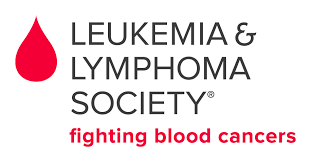Chemotherapy involves administering highly potent drugs that are toxic enough to damage or kill leukemic cells. However, the drugs will also impact normal cells and can cause side effects.
Physicians often combine chemotherapy drugs together to treat Non-Hodgkin Lymphoma (NHL). Each type of drug works in a different fashion in order to kill the cancerous cells. Combining different types of drugs can increase their overall combined effectiveness. You may be given the drugs as pills by mouth, through a catheter or with an IV surgically placed in a vein, usually in your upper chest.
Chemotherapy is given in cycles, usually with several weeks between treatments and most often in an outpatient setting. Patients typically need a number of cycles over a six to 10 month time period.
Radiation therapy is sometimes used to kill Non-Hodgkin Lymphoma (NHL) cells that have accumulated in one part of the body. Few NHL cases are treated with radiation therapy alone because lymphoma cells are usually dispersed throughout the body. However, radiation may be used alongside other therapies, such as chemotherapy. If you have an especially large mass of lymphoma in one area, it can apply pressure to or invade nearby organs. Radiation can be used with chemotherapy in such situations to help provide better control of the lymphoma.
Radiation therapy is directed solely to the parts of your body that are affected by NHL. A machine called a linear accelerator, or Linac, sends beam radiation to the specific targeted area(s) of your body as you lie on a moveable table.
There are several different types of stem cell transplants. Autologous stem cell transplantation may be recommended for patients whose lymphoma has relapsed for the first time. Transplantation to achieve first remission is currently being studied in clinical trials.
Non-Hodgkin Lymphoma (NHL) patients usually undergo an autologous stem cell transplantation. In this type of transplant, your own healthy stem cells are "harvested," or retrieved, from your body and then frozen. After you receive intensive drug therapy, your cells are thawed and given back to you in a procedure that is very much like receiving a red blood cell or platelet transfusion.
Some people can have their NHL managed for a period of time just by being observed under the supervision of their doctor, known as the “watch and wait” method. Using this method, your physician carefully monitors your condition with regular physical exams and lab tests. The “watch and wait” treatment approach is often used for indolent (slow-growing) NHL.
It is important to remember that the “watch-and-wait” approach is the standard of care for people whose disease isn’t widespread and who don’t have any symptoms. The “watch-and-wait” approach allows you to avoid the harmful side effects of therapy until you need treatment.
You should visit your doctor regularly so he or she can monitor you for changes in your health, specifically watching whether your disease stays stable or begins to progress. Your doctor will monitor your test results, decide when it's time to start treatment, and determine what the best treatment option is for you. Almost 50 percent of all patients with certain types of lymphoma can delay treatment for at least three years. A few such patients have even been in “watch-and-wait” mode for more than 10 years and have never needed treatment.
When to Begin Treatment
Your doctor may advise you to start treatment if you have:
- Lymph nodes that are growing in size
- Newly affected lymph nodes
- Bones or other organs that are being affected by NHL
- A decrease in your blood cell counts.
To learn more, visit The Leukemia and Lymphoma Society.
 Content provided by:
Content provided by: